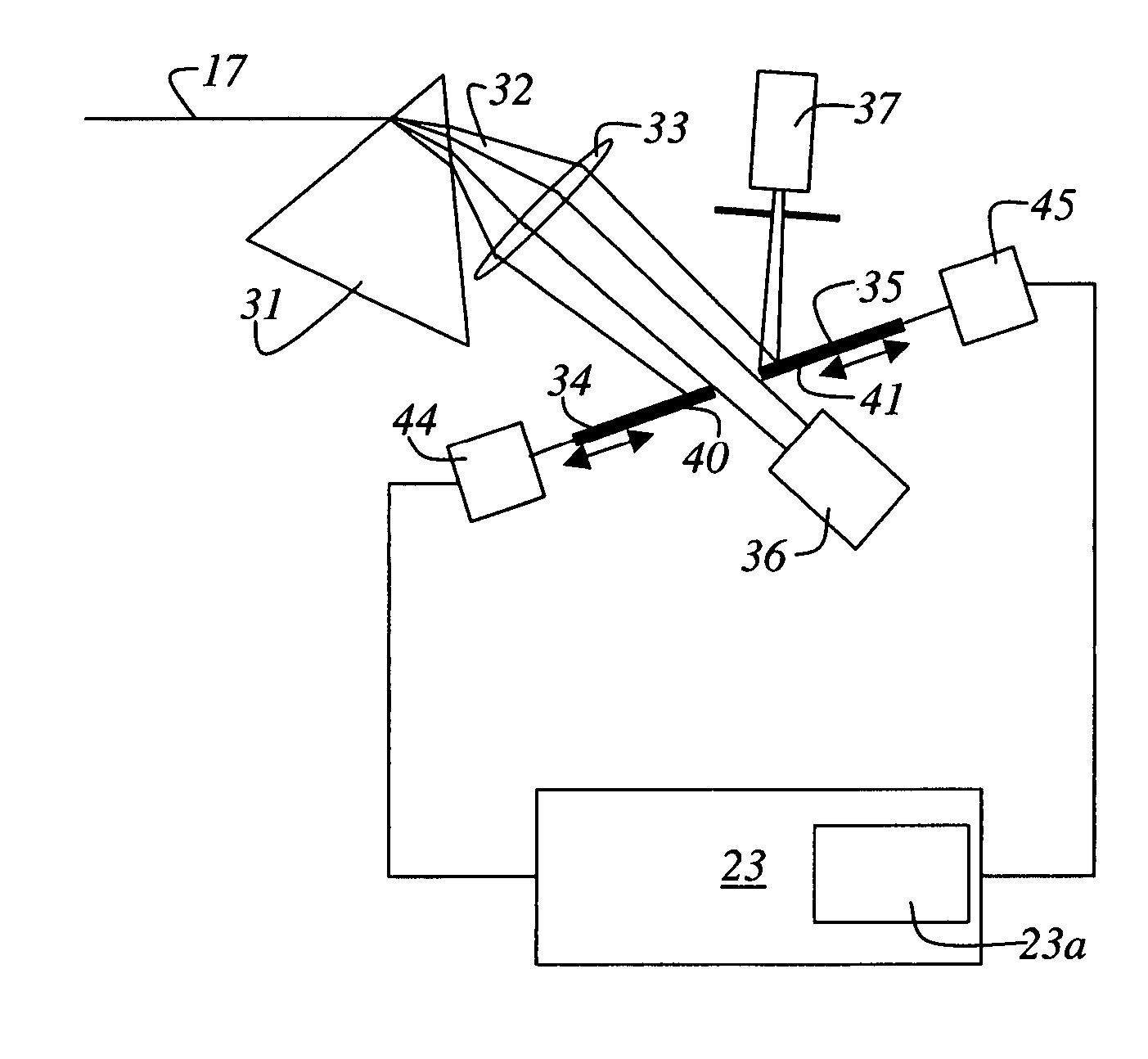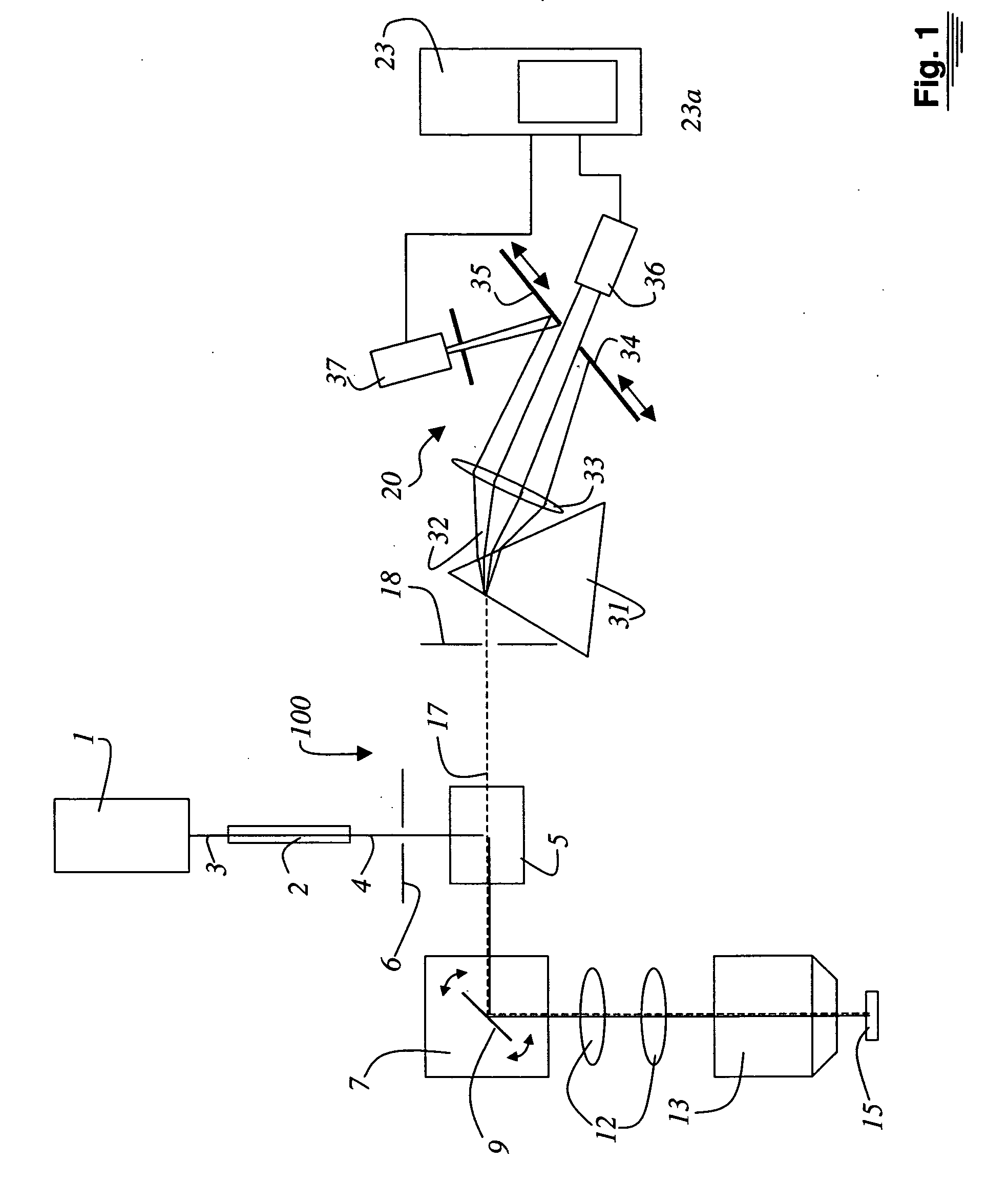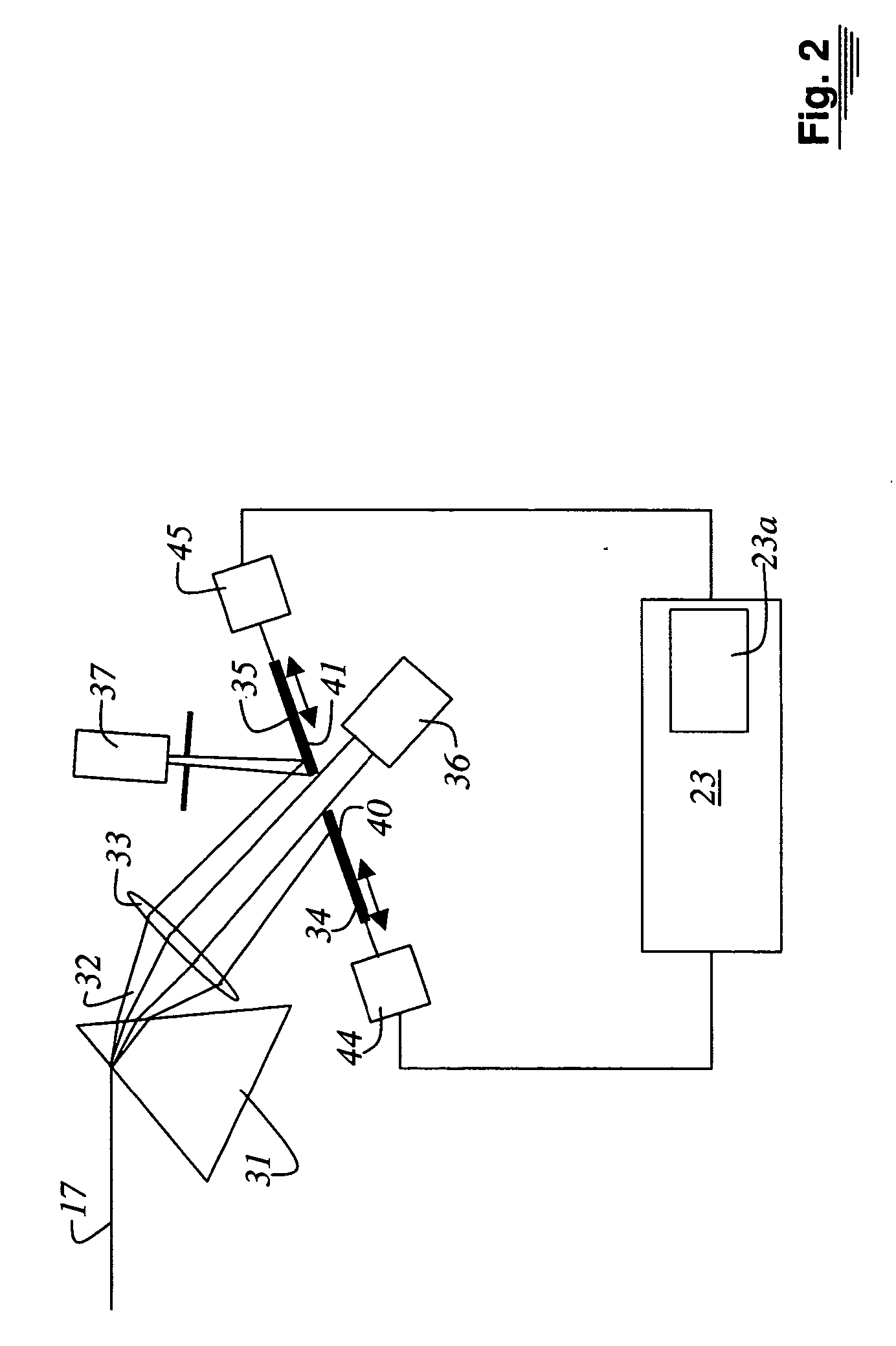Method for separating fluorescence spectra of dyes present in a sample
a dye and fluorescence spectra technology, applied in the field of illumination and detection of fluorescence signals, can solve the problems of inability to apply fluorescence measurements using scanning microscopes, and inability to achieve optimal information acquisition,
- Summary
- Abstract
- Description
- Claims
- Application Information
AI Technical Summary
Benefits of technology
Problems solved by technology
Method used
Image
Examples
Embodiment Construction
FIG. 1 schematically shows the exemplary embodiment of a confocal scanning microscope 100. This is not, however, to be construed as a limitation of the invention, and one skilled in the art is well aware that the same invention-relevant components can also be installed in fluorometers, cytometers, and microscope systems of different design. Illuminating light 3 coming from at least one illumination system 1 is directed by a beam splitter or a suitable deflection means 5 to a scanning module 7. Before illuminating light 3 encounters deflection means 5, it passes through an illumination pinhole 6. Scanning module 7 encompasses a gimbal-mounted scanning mirror 9 that guides illuminating light 3 through a scanning optical system 12 and a microscope optical system 13 and over or through a specimen 15. A light guiding fiber or a micro structured optical element 2 can be configured in such a way that it generates white light from the light of a laser (the laser is illumination system 1). T...
PUM
| Property | Measurement | Unit |
|---|---|---|
| spectral scanning microscope | aaaaa | aaaaa |
| wavelength | aaaaa | aaaaa |
| emission spectra | aaaaa | aaaaa |
Abstract
Description
Claims
Application Information
 Login to View More
Login to View More - R&D
- Intellectual Property
- Life Sciences
- Materials
- Tech Scout
- Unparalleled Data Quality
- Higher Quality Content
- 60% Fewer Hallucinations
Browse by: Latest US Patents, China's latest patents, Technical Efficacy Thesaurus, Application Domain, Technology Topic, Popular Technical Reports.
© 2025 PatSnap. All rights reserved.Legal|Privacy policy|Modern Slavery Act Transparency Statement|Sitemap|About US| Contact US: help@patsnap.com



